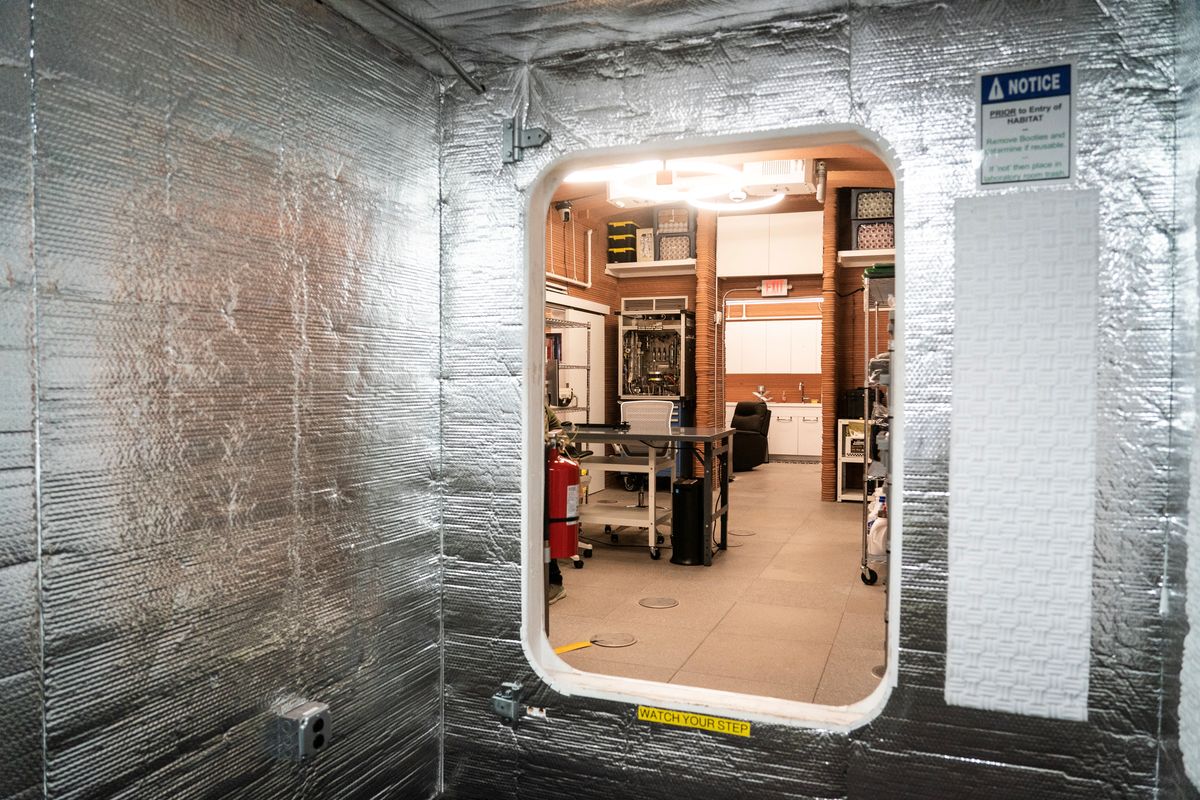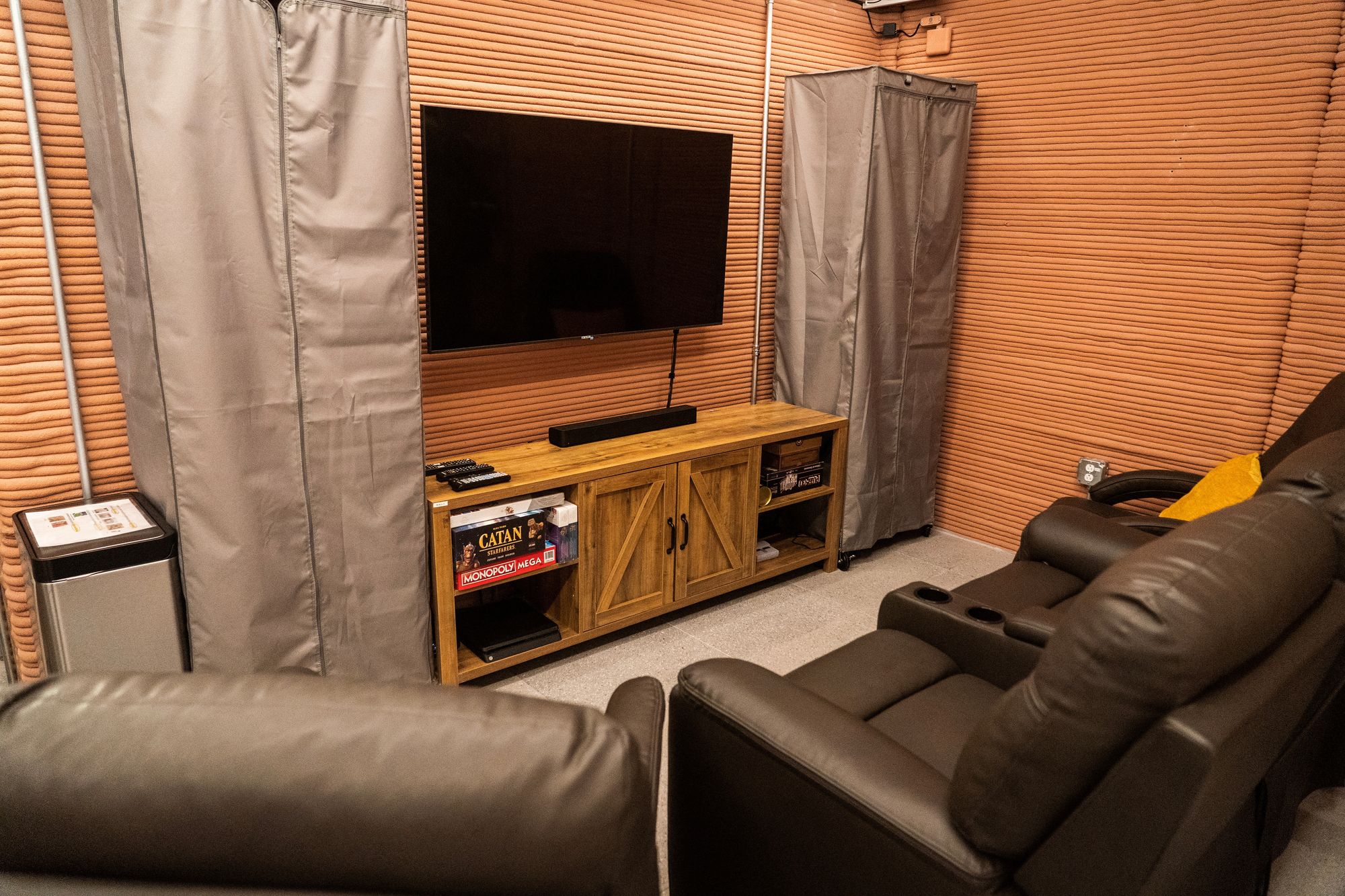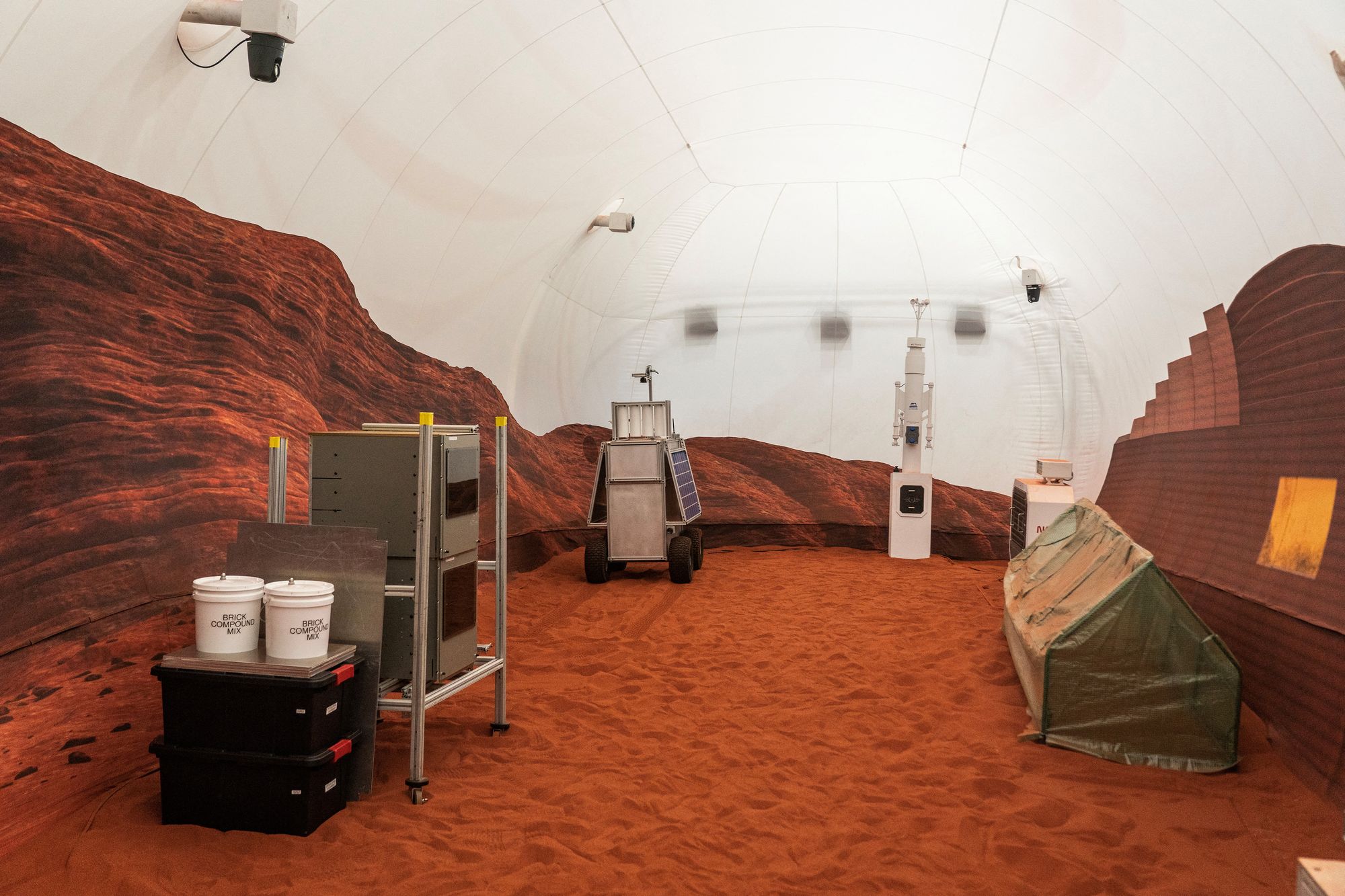NASA creates a Mars simulation habitat – let’s take a look inside
So, what does this simulator look like?

A few minutes every morning is all you need.
Stay up to date on the world's Headlines and Human Stories. It's fun, it's factual, it's fluff-free.
NASA is gearing up for a lot of new developments in the near future. We’re going to the moon again for the first time in 50 years in 2024 with the Artemis II. But, the space agency has its ambitions set even further. Literally. Like, Mars far.
At the NASA Johnson Space Center in Houston, Texas, NASA has built a Mars simulator, which it’s using for research to see if humans would be able to live on Mars for an entire year. On Tuesday, it unveiled the simulator, where four volunteers (who actually aren’t astronauts but are people extensively studying STEM subjects) will live for a year starting this June. Researchers want to see how living in this pod with limited resources with one another will affect human health. The project is called the Crew Health Performance Exploration Analog, or Chapea.
“As we move from low Earth orbit, from moon to Mars, we’re going to have a lot more resource restrictions than we have on the International Space Station and we’re going to be a lot further from Earth or any help from Earth,” said Dr. Grace Douglas, Chapea’s principal investigator.
So, what does this simulator look like?
Inside a warehouse is an isolated 1,700-square-foot, 3D-printed structure with four private bedrooms, a kitchen, two bathrooms, and a common living room area with recliners, a Play Station3, board games and even TVs. There are also dedicated workspaces, a mini-gym, a crop-growing/gardening area and a medical bay where scientists will get medical samples from the four crew members.

And outside of this structure is a sandy "outdoor" area that's supposed to mimic Mars. Crew members will go on exploration walks and participate in activities out here, where they'll be given VR headsets and a treadmill to make the experience more Mars-like. This could be like hiking for hours or dusting red sand off solar panels outside of their space homes.

But it's not just the isolation that NASA wants to mimic; it'll also be things like resource limitations, such as food. On top of that, communication from the humans in the simulator will take over 20 minutes to reach the outside world – just like how it would be if astronauts were communicating with Earth.
Douglas explains, "During this time, we'll be collecting that cognitive and physical performance data to really understand in relation to those resources how we're supporting them. Ultimately, this information can be used by our mission planners and our vehicle developers to make informed decisions on the resource trade with the risk to health and performance."




Comments ()